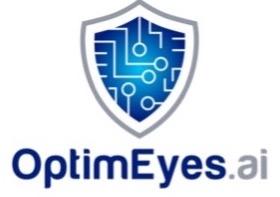Enterprise Risk Management Evolves into Integrated, Digital Risk Modeling (IDRM)
The compelling need for Cyber Risk Management Solutions!
Cyber-attacks, Data breaches, Increasingly complex regulatory requirements, Supply chain challenges created or exacerbated by geopolitics and the global pandemic!
As enterprise risk management grows more demanding by the day, companies’ processes, protocols and technology have not kept pace. The expanding cyber defense gap is of special and growing concern at the highest levels of government and business:
The 13 Costliest Cyberattacks of 2022:
1. November 2022: Government of Costa Rica
2. October 2022: Medibank
3. October 2022: CommonSpirit Health System
4. September 2022: Uber
5. September 2022: Rockstar Games
6. May 2022: AcidRain Wiper Malware
7. April 2022: Austin Peay State University
8. April 2022: Austin Peay State University
9. April 2022: Florida International University
10. March 2022: North Carolina A&T
11. February 2022: Nvidia
12. January 2022: Red Cross
13. January 2022: Twitter
The SEC’s new rule requires public companies to report material cybersecurity incidents within four business days after determining that an event has occurred. Companies must also provide periodic updates of previously reported cybersecurity incidents and share their cybersecurity risk management policies and procedures.
Companies will now be required to disclose some of the following bullets on their 10-K, related to their cyber risk-management policies:
- Outline and description of their cybersecurity risk program
- How they engage with third-party assessors or consultants
- Measures for cyber incident prevention, detection, and mitigation
- Business continuity and recovery procedures in the event of a breach
- How cybersecurity risk might impact the company’s financials
- Business strategy and planning related to cybersecurity risk
Traditional Cyber Risk Management Solutions
Traditionally, risk officers have established enterprise risk programs to address these issues. Initiatives were built upon risk frameworks and supporting governance that included risk and compliance committees, risk assessments, risk registers and periodic risk reports to the C-suite and board.
In the past, these governance efforts were typically well received. However, these programs have not been able to keep pace with the growing threat landscape. As an example, monthly or quarterly reports do not equip company leaders with the up-to-date information necessary to prevent and proactively defend against today’s aggressive cyber-attacks and data breaches. Compounding this problem, risk assessment data often is collected and analyzed manually in spreadsheets and operational silos. This piecemeal approach leaves you and your organization unable to quantify, benchmark, or compare risks across the enterprise, hampering your ability to implement sound risk mitigation strategies. The tried and true practices of the past, simply are not enough for today’s complex world.
Evolution of Integrated Digital Cyber Risk Modeling (IDRM)
Thankfully, technological advances have opened the doors to integrated, digital risk modeling, or IDRM. This capability is a key part of the solution sought in Washington, Silicon Valley and the corporate boardrooms around the world.
Benefits of Integrated Digital Cyber Risk Modeling for Enterprises:
Risk Analysis Leads the Way A key part of the solution is emerging from the realm of risk analysis: the use of digital tools that capture, integrate, and visually present real-time data that helps you to quantify, benchmark, and predict – proactively – the impact of threats and vulnerabilities. This type of integrated, digital risk modeling enables you and your organization to:
- Continuously monitor risk exposure based on your unique operational data and circumstances, not general industry information and assumptions. This identifies specific organization threats so they can be addressed proactively.
- Eliminate risk-assessment silos, see threats and vulnerabilities in context, weigh and compare their potential impact, and inform priorities and decision-making.
- Present comprehensive, enterprise-wide reports in a clear, intuitive, unbiased format that leads to more consistent and accurate decisions at various management levels.
- Calculate and predict financial exposure by quantifying the cost of each threat. In this way, you can set priorities and rapidly respond to your most significant challenges.
- your risk monitoring and the way you analyze and report on the information collected, so risk modeling will reflect your organization’s unique strategic objectives and risk profile.
- Compare company-specific, real-time risk scores against industry benchmarks to track your progress against peers.
- Run risk scenarios to see the worst and best cases in order to plan your investment and resource assignment.
As teams responsible for enterprise risk management increasingly turn to IDRM, your organizations will be better prepared to effectively address the multiple fast-changing, high-stakes risks that are faced today and tomorrow.
To stay updated on the evolution of Integrated Digital Risk Modeling or IDRM, follow RiskOpsAI™ on LinkedIn.
